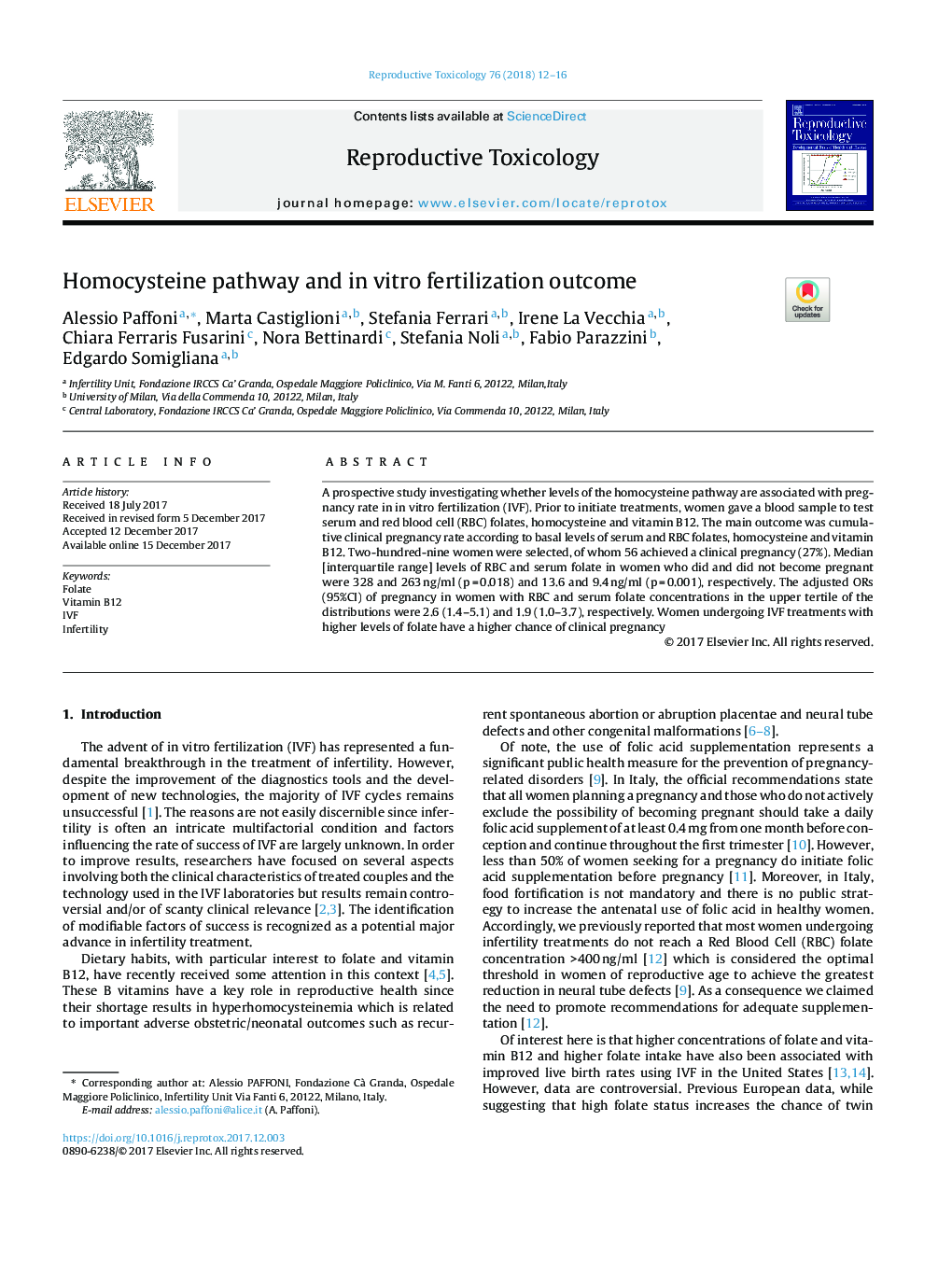| Article ID | Journal | Published Year | Pages | File Type |
|---|---|---|---|---|
| 8552365 | Reproductive Toxicology | 2018 | 5 Pages |
Abstract
A prospective study investigating whether levels of the homocysteine pathway are associated with pregnancy rate in in vitro fertilization (IVF). Prior to initiate treatments, women gave a blood sample to test serum and red blood cell (RBC) folates, homocysteine and vitamin B12. The main outcome was cumulative clinical pregnancy rate according to basal levels of serum and RBC folates, homocysteine and vitamin B12. Two-hundred-nine women were selected, of whom 56 achieved a clinical pregnancy (27%). Median [interquartile range] levels of RBC and serum folate in women who did and did not become pregnant were 328 and 263â¯ng/ml (pâ¯=â¯0.018) and 13.6 and 9.4â¯ng/ml (pâ¯=â¯0.001), respectively. The adjusted ORs (95%CI) of pregnancy in women with RBC and serum folate concentrations in the upper tertile of the distributions were 2.6 (1.4-5.1) and 1.9 (1.0-3.7), respectively. Women undergoing IVF treatments with higher levels of folate have a higher chance of clinical pregnancy
Keywords
Related Topics
Life Sciences
Environmental Science
Health, Toxicology and Mutagenesis
Authors
Alessio Paffoni, Marta Castiglioni, Stefania Ferrari, Irene La Vecchia, Chiara Ferraris Fusarini, Nora Bettinardi, Stefania Noli, Fabio Parazzini, Edgardo Somigliana,
